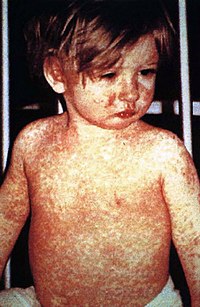
Photo from wikipedia
Buschke-Lowenstein tumors are large fungating lesions of the anogenital area caused by human papillomavirus. No accepted definition exists, and the literature consists almost exclusively from case reports, yielding significant misinformation.… Click to show full abstract
Buschke-Lowenstein tumors are large fungating lesions of the anogenital area caused by human papillomavirus. No accepted definition exists, and the literature consists almost exclusively from case reports, yielding significant misinformation. Supplemental digital content is available in the text. Abstract Buschke-Lowenstein (B-L) tumors or giant condylomata are large fungating lesions that are caused by human papillomavirus (HPV) and develop in the anogenital region. Although uncommon, physicians and surgeons who treat sexually transmitted diseases or other diseases involving the anogenital area will encounter these patients. The purpose of this study is to review the current literature regarding these lesions. We evaluated every published study in PubMed and Embase from 1925 to 2020, concentrating on the clinical data included in each report, such as presentation and treatment. We also evaluated each work for any definition used and found that there is no accepted definition for these lesions. As such, we provide an inclusive, workable definition. In addition, there are many misconceptions about B-L that continue to be propogated as more case reports are published every year. After evaluating every published case, we refute the fact that these lesions have a high mortality or a high malignancy rate. Furthermore, we refute that these lesions are synonymous with verrucous carcinoma. In addition to a definition, we also propose a simple grading system that we hope can be used to assist in the study and management of these patients moving forward. Although the literature is very heterogenous regarding B-L, they are caused by HPV and are distinct from verrucous carcinoma. Because of the majority of information is based on case reports, the literature concentrates on treatment, but more work is clearly needed to delineate the association with specific HPV types and optimal management of this disease.
Journal Title: Sexually Transmitted Diseases
Year Published: 2021
Link to full text (if available)
Share on Social Media: Sign Up to like & get
recommendations!